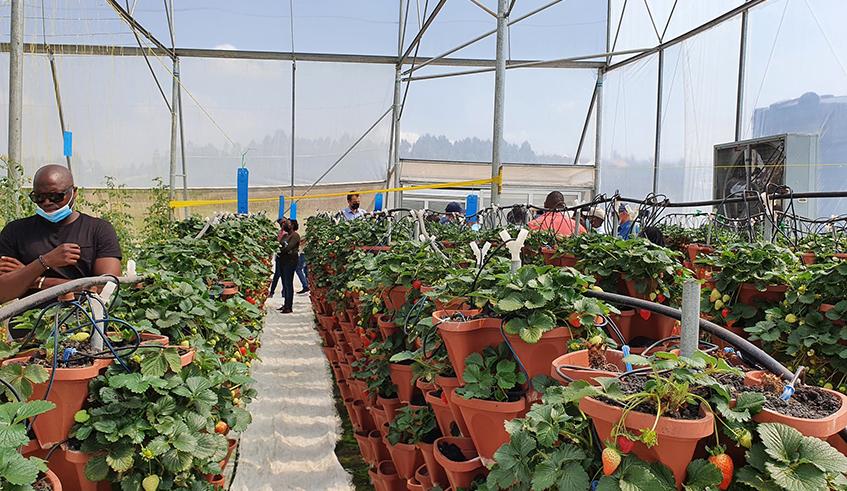Africa-Press – Rwanda. Rwanda needs at least Rwf68.5 billion in the next two years or so to invest in hydroponic farming – a practice of growing crops using mineral nutrient solutions, in water, without soil.
The Ministry of Agriculture says it has earmarked 38.1 hectares on which to conduct hydroponic farming by 2024 as it steps up efforts to increase food production.
However, in order to achieve its objectives, the government will have to look for private partners. The ministry has prioritised vegetables, fruits, cassava as well as sweet potatoes as some of the crops to be grown under the hydroponic farming technique.
Charles Bucagu, the Deputy Director-General of Agriculture Research and Technology Transfer at Rwanda Agriculture and Animal Resources Development Board, says that the system is meant for high-value commodities or production of disease-free seeds.
Currently, Rwanda uses nutritive solutions (liquid fertilisers used in hydroponic farming) imported from Kenya. “We are using hydroponic for potato seed production in our research station in Musanze District,” he said.
The government has also pledged to invest Rwf8.2 billion in research infrastructure by upgrading and constructing greenhouses and hydroponic facilities by 2024. The soilless system is also already under trial for the production of vegetables and fruits like strawberries in Muhanga District.
“This technology is for commercial farming, requiring intense knowledge-based technology, practical for research and commercial production schemes,” Bucagu said.
He also disclosed that the government has already set up a grant for private players that need to partner with it in the development of hydroponic farming.
“People can write business plans and apply, and eventually would get grants depending on the relevance and how much the project is impactful,” he said.
Government seeks to focus on facilitating private sector investment in fruit and vegetable production through controlling pests and diseases as well as supporting the demonstration of better technologies such as greenhouses, hydroponics, and other small-scale irrigation solutions. Officials say it requires to support testing hydroponics and private sector providers in extension services.
Tenfold increase in production
Christian Irakoze, the Co-founder of Eza Neza Company Ltd, an agribusiness specialised in hydroponics and greenhouse technologies since December 2020 in Muhanga District, told The New Times that they already use the technology.
They grow fruits and vegetables including strawberries, tomatoes and pepper. The indoor farming hydroponics technique uses 80 per cent less water, 80 per cent less land compared to conventional farming methods.
If optimised, he said, hydroponic farming could increase production by between eight and ten times compared to conventional farming methods. He said the technology also prevents soil-borne diseases.
“In terms of production, on open fields, tomato yield is five kilogrammes per square metre while using hydroponic farming, the yield can grow up between 8 and 10 times more efficient,” he said. This increase means 50 Kilograms per square metre or 500 tonnes per hectare from five kilograms and 50 tonnes respectively.
“In order to scale up the technology we need we need to be able to demonstrate its success on small scale like on 500 square metres even on 1,000 square metres. Then a success on small scale can be scaled up on a much big scale,” he said.
Currently, the firm applies hydroponic farming on 900 square metres. “We need successful demonstration and working models. In that scenario, it can attract more investment,” he said. Irakoze first tried hydroponic farming in 2017 with lettuce before launching the successful model in 2020.
The Ministry of Agriculture says farming vertically in hydroponics, and greenhouses could help a farmer harvest up to 500 tonnes per hectare, or 100 tonnes on 0.2 hectares, against about six tonnes produced on 0.2 hectares.






